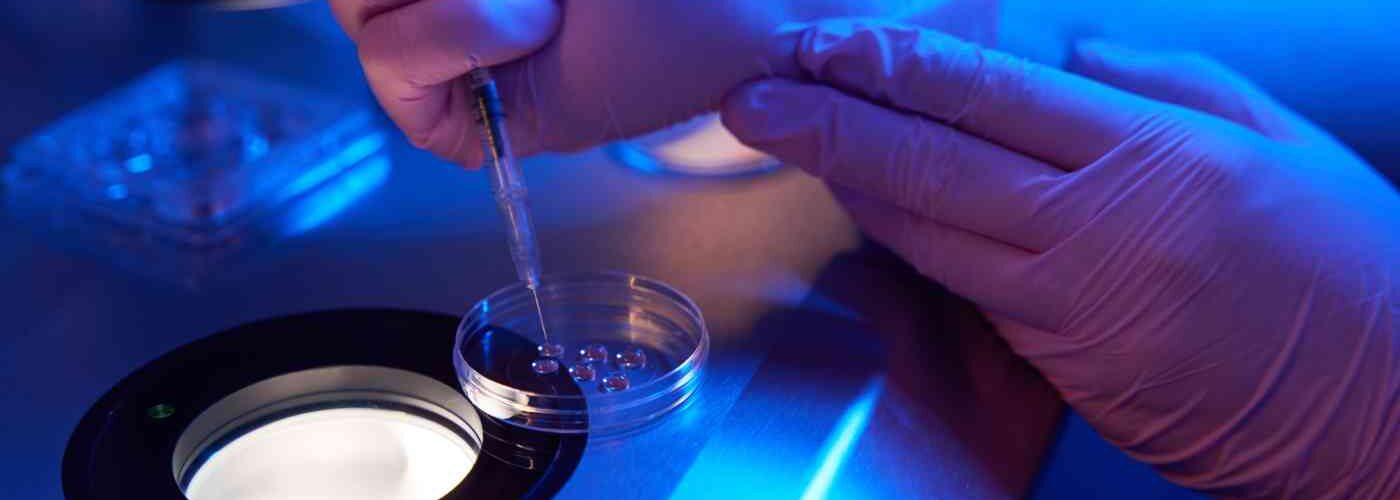
- A newly presented study by IVI at the 41st Annual Meeting of the European Society of Human Reproduction and Embryology (ESHRE) has demonstrated improved ovarian function in mice following the injection of a specific combination of key proteins
- The study, conducted in female mice with premature ovarian insufficiency (POI), resulted in a fivefold increase in the number of oocytes retrieved after ovarian stimulation—highlighting a promising new line of research and a potential therapeutic alternative for affected patients
- POI is a condition in which the ovaries cease to function properly before the age of 40, leading to low estrogen levels and often resulting in infertility
PARIS, JUNE 30, 2025
Can damaged or prematurely aged ovaries be restored using stem cells? Recent advancements in assisted reproductive technologies have positioned stem cell–based therapies as a promising area of regenerative medicine, especially for women with premature ovarian insufficiency (POI). Now, a new development suggests that a specific combination of proteins secreted by these cells could offer a breakthrough for these patients.
In this context, a study presented by IVI at the 41st ESHRE Annual Meeting showcased compelling results through the identification of key proteins which, when injected directly into the ovaries, increased the number of mature oocytes retrieved after stimulation by up to five times in a POI mouse model. These mice typically produce very few oocytes due to their condition.
“Rather than using the stem cells themselves, this study took a step further by identifying three proteins produced by them—thrombospondin 1 (THBS1), KIT ligand (KITLG), and fibroblast growth factor 2 (FGF2)—which had already demonstrated essential roles in previous research. We combined them into a ‘cocktail’ and injected it directly into the ovaries of mice with POI. This technique led to significant improvements in oocyte yield and embryonic development,” explains Dr. Sonia Herraiz, lead author of the study and researcher at the IVI Foundation.
The study, titled ‘Intraovarian treatment with a specific combination of stem cell-secreted factors reactivates ovarian function in a premature ovarian insufficiency (POI) mouse model”, presented in Paris, offers a new path forward. POI is characterized by the early loss of normal ovarian function, resulting in low estrogen levels and partial or total infertility. In recent years, multiple stem cell–based strategies have been explored as potential ways to restore ovarian function in women with diminished ovarian reserve due to this condition.
This preclinical study, conducted in female mice, investigated the impact of intraovarian administration of the three key factors (THBS1, KITLG, and FGF2) delivered through two injections. Following controlled ovarian hyperstimulation for oocyte retrieval, in vitro fertilization, and embryo culture, the results demonstrated marked improvement in oocyte quantity, oocyte quality, and early embryonic development.
While further validation using human ovarian tissue is still needed, the results open a new avenue of investigation that could eventually lead to a promising therapeutic alternative for women diagnosed with POI.
As Dr. Herraiz explains, “This is a remarkable finding, opening the door to a potentially less invasive therapeutic approach based on the use of specific proteins. This protein combination may prove critical for patients facing infertility due to POI, many of whom currently resort to egg donation. Without a doubt, this represents a new opportunity to one day restore their ovarian function and increase their chances of conceiving with their own oocytes”.
